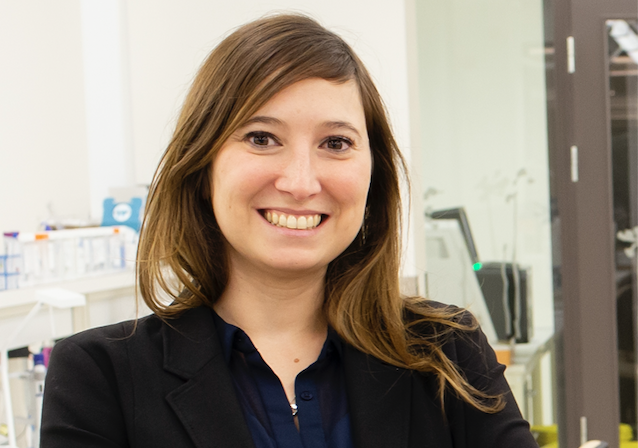Hello there, Stefania Giacomello!
Hello there - a new series to get to know KTH FOOD Faculty

Giacomello is conducting her research in the Spatial Biology field, studying how biological information of cells in a tissue is structured in 2D. Her research team is aiming to discover the tight connection between food and the human gut microbiome and especially how dietary interventions can be beneficial for the microbiome and therefore our health.
In the Spatial Biology field, Stefania specifically develops molecular methods to understand how the gene expression changes from cell to cell in a spatial gradient and how cells communicate among themselves.
- Achieving a spatial resolution of this process is key since cells are physically connected and biological signals propagate from one cell to another, says Giacomello.
What do you think is the most important challenge within the food system today?
Creating sustainable personalized diets that are compatible with our genetic/microbial background.
How is your research related to food?
Recently, we developed a new approach named “Spatial metaTranscriptomics” (SmT), which lays its foundation on the Spatial Transcriptomics technology developed at KTH/SciLifeLab in 2016 ( Ståhl et al., 2016 ), to simultaneously study not only the gene expression of tissues in 2D but also their microbial (bacterial and fungal) content. The study of the impact of the microbial content on tissues like the human gut is extremely important to study a variety of research questions related to food. For example, how does a specific type of diet impact our gut microbiome and therefore the homeostasis of our system? Or, how could a specific type of diet help to prevent certain diseases linked to the gut microbiome health?
Why did you decide to conduct your research in the Spatial Biology field?
We have worked on the development of SmT to enable a brand-new type of research line, which is currently unexplored. There is an increasing amount of evidence describing the close connection between the gut microbiome and our health. Thus, being able to study the gut microbiome together with the host response at a spatial level will unlock new knowledge that, down the line, we have the ambition it will be transformative for the medical field.
What value do you see in being affiliated with KTH FOOD Centre?
Being affiliated with the KTH FOOD Centre is a unique opportunity to not only network with different experts that work with subjects related to food (going from its components to its modification) that can provide us with feedback and insights for our research but also to create multidisciplinary collaborations. In fact, to really comprehend how food and the gut microbiome are closely related we need to study the problem from several different angles.
